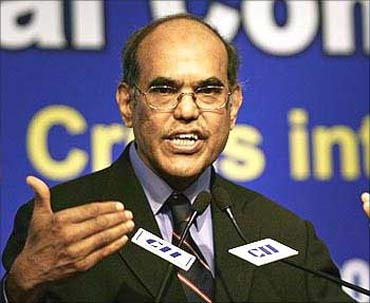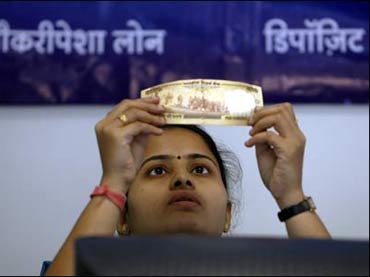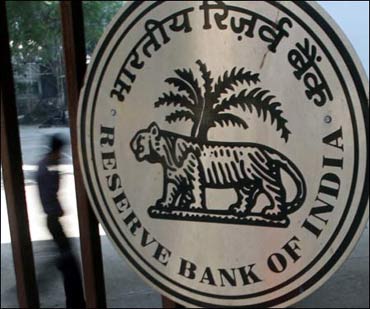
Most banks, particularly the public sector ones, have told the Reserve Bank of India they don't want the savings bank interest rate freed, the last one to remain regulated.
This is unsurprising as fear of the unknown and of volatility sways even the greatest votaries of business deregulation. But that is no reason why the RBI should listen to the banks.
The primary argument offered by them is that freeing the rate will unleash competition (that, in itself, should be a good reason for doing so) in which state-owned banks will suffer.
Their ability to compete on price is supposedly limited, compared to private and foreign-owned banks. The latter, in particularly, rely little on savings deposits and may find it beneficial to raise this rate to fetch more such deposits, thereby reducing their dependence on costlier call money.
First, neither foreign nor private banks have the extensive branch network that the state-owned banks do. It is absurd to think that an account holder will be lured away by a percentage point or two of additional interest on an essential core of liquid cash, held for all contingencies (this is what a savings bank account is), by a bank that may not even have a branch in town.
Click NEXT to read on . . .

So, the further away a modest (not high net worth) account holder is from urban India the more price inelastic will his core deposits be. This is also the age of financial inclusion when every effort is being made to take financial services to those who have been left out.
So, one sure way in which banks with large branch networks can safeguard their float (that part of deposits which barely costs anything to attract and stays put willy-nilly) is to spread financial inclusion.
This process will also raise the national savings rate further, the way in which bank nationalisation and branch expansion did originally.
So, the regulator can go ahead and free the savings bank interest rate while the state can give banks an incentive to spread the banking habit (say so many rupees per year per active no-frill account).
This is already being talked about. Banks, in fact, will have a great opportunity to make deregulation pay by using technology to crash transaction costs. An extensive business correspondent network, enabled by wireless devices, can work wonders.
Click NEXT to read on . . .

A large fast-moving consumer goods firm or a village provisions store may find it beneficial to offer basic banking services at little or no cost because of the customs that it will bring in.
Today information technology also allows banks to go in for much greater market segmentation and charge differential interest rates. Also, since the advent of the base rate system has effectively freed all lending rates, banks that serve their customers well can protect their net interest margin by both paying and charging more.
Finally, it is absurd and unfair for banks to pay by fiat (it would be another matter if the market made them do so) their lay depositors 3.5 per cent when inflation is running in double digits.
The RBI has to look after the interest of not just the banks but also the depositors.